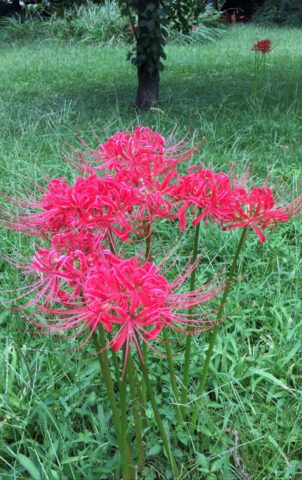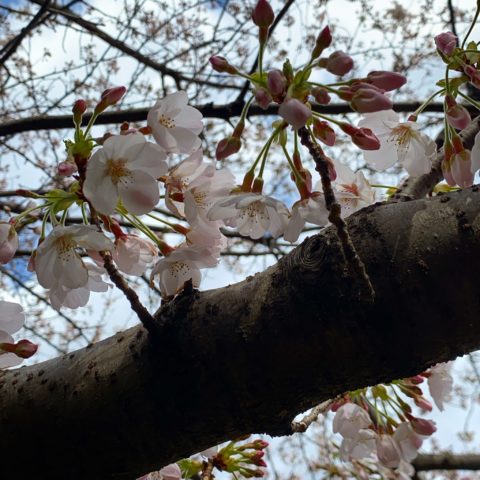
Haiku today Sept. 23, 2021
By Yuri Kageyama
リストカット
悲鳴をあげるは
彼岸花
wrist cutting syndrome
you can hear the screaming
higanbana


Haiku today Sept. 23, 2021
By Yuri Kageyama
リストカット
悲鳴をあげるは
彼岸花
wrist cutting syndrome
you can hear the screaming
higanbana
Haiku March 24, 2021 by Yuri Kageyama
つえをつき
見上げる空に
初桜
Cane in his hand,
He looks up for a long time
First cherry blossoms
The world suddenly looks like a splendid and hopeful place when sakura starts to bloom, right about this time in Tokyo. It happens without fail every year. But it’s so dazzling it feels unexpected. This morning, an old man was gazing up at a tree, probably the first cherry blossom tree he saw on his walk. His eyes, behind the glasses, I knew had seen so much, and was seeing all of that, again, in the flowers.

Memorable Flowers _ A Haiku Poem by Yuri Kageyama
high-school prom corsage
a lover’s bouquet on pay day
weeds your child picks for you
Every year about this time of the year Japanese _ it seems every Japanese brings out big blue sheets of plastic to sit beneath cherry trees.
The practice of planting cheery trees in rows dates back to the Edo Period, where “hanami,” or flower-watching, started and is depicted in ukiyoe scrolls.
The springtime party was a big equalizer for a culture dominated by the bustling “iki” merchant class _ so different from the stuck-up somber divisive nobility of the previous eras.
Beneath the trees exploding with blossoms, people sit flat on the ground as equals, eating, singing, talking in big voices, drinking, reveling in their equality, practicality and vulgarity.
The branches are foaming with pale pink blossoms, some petals wafting with their sweet scent likes pieces of chiffon.
In contrast, the food smells bad, poorly made sushi, fried chicken and noodles.
Canned beer is guzzled, and the talking is loud.
Only in a strictly hierarchical society would the symbolic equalizer of hanami be so highly valued.
Japanese thrive on the democratic myth of hanami.
Although the purpose of these gatherings is to look at flowers, no one bothers to ask if anyone is really looking.
It is unclear whether people are just pretending to have a good time or they are really having a good time.
Everyone knows there is no such thing as equality in Japan _ a nation where the dumbest man is superior to the most qualified woman, and status is won by seniority and inheritance and personal ties _ not performance or productivity _ and language and mannerisms are defined by where one stands in strictly defined rankings.
In fact, the lowliest one, like a woman or the newly hired recruit at a company, has to go early and mark out the hanami spot beneath a tree with the blue plastic to make sure no other group takes that spot.
Some equality.
The picnic continues into the night.
Too drunk, some people are barely able to stand.
Lovers of group behavior to the max, Japanese come out in hordes during hanami season, the two weeks or so when the cherry trees are in bloom.
No matter that the crowds sitting, in some parks, right next to each other like a commuter train, are nothing but a blight to the scenic landscape.
If you question hanami, if you are not having the ball of your life, you are not a true Japanese.
I’ve decided to change the haiku from before to this:
八重桜
ここにいます!と
どぶに散る
Yaezakura
I am here! Scattering
petals in the ditch
The way I had it before with 影のなか (In the shadows) was too regular/predictable haiku-like.
Today, on my way to work, I saw cherry trees bending over a muddy ditch.
I realized that image sent a stronger message about what I was feeling _ that the flowers bloom wherever they are, even if no one is watching or aware of its existence.
That to me is utter beauty and presence and life.
And a ditch still can be a good dark backdrop for cascading pink petals.